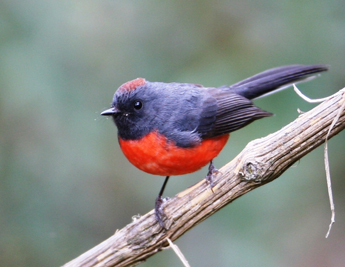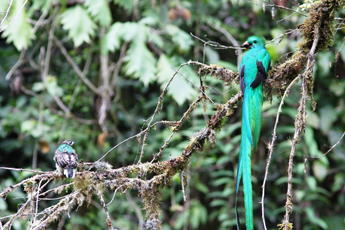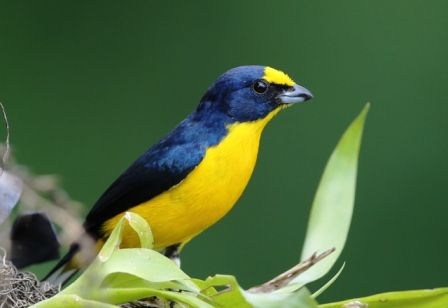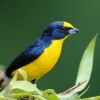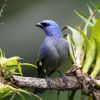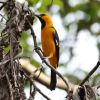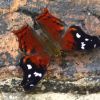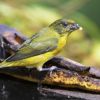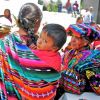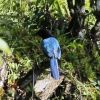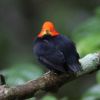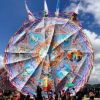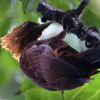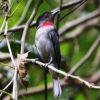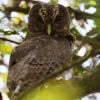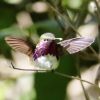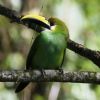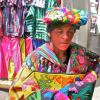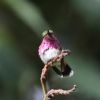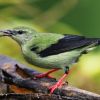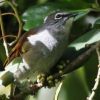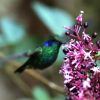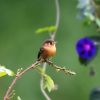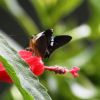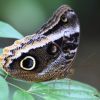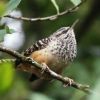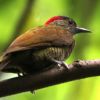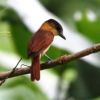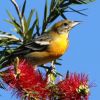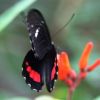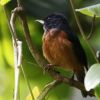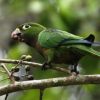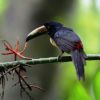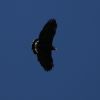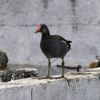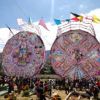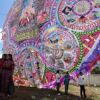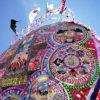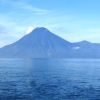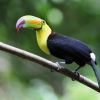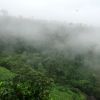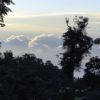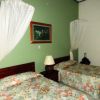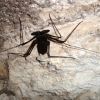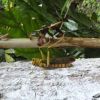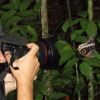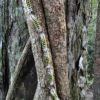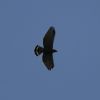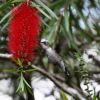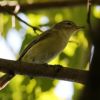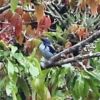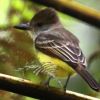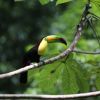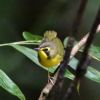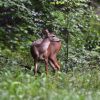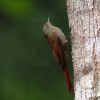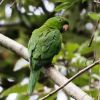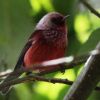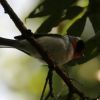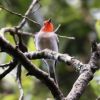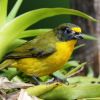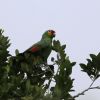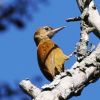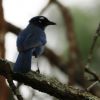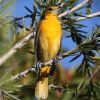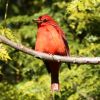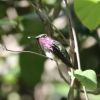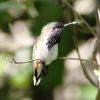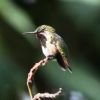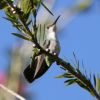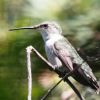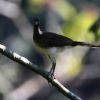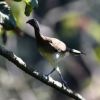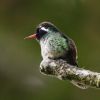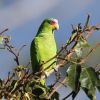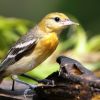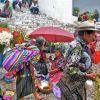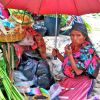Day 1
Start from London in the morning, arrival to Guatemala city late evening.
Night in/near Guatemala City.
Day 2 & 3
After breakfast we drive to the Western Highlands volcanic region where we spend our first days at the Southern slopes of Volcanoes Atitlan and San Pedro. We discover the trails of Los Tarrales Nature Reserve and the lush surrounding area of our perfectly situated accommodation.
In the hilly property the elevation varies between 2300 and 8200 feet, so they have coffee plantations on the lower parts mixed with subtropical humid forests and incredible cloud forests at the higher elevations. As a result there is a very high diversity of flora and fauna at their close to 800 hectares area. In terms of birds that means that we can look here for a really long list and wide range of species, common ones like Violet Sabrewing, Red-billed Pigeon, White-tipped Dove, Long-billed Gnatwren, Smoky-brown & Golden-olive Woodpecker, Red-legged Honeycreeper, Black-headed Saltator, Black & White, Magnolia, Tenessee Warbler, but harder or rarer ones as well including Highland Guan, Pacific Parakeet, Yellow-naped Parrot, Long-tailed Manakin and perhaps Azure-rumped/Cabanis’ Tanager.
But the main attraction, the Holy Grail of the birders here and indeed in the whole country is the Horned Guan. We will dedicate an early morning hike up to the higher part of the volcano to find this unique, somewhat comical, cartoon-type-looking bird. If we can find some flowering or fruiting Canak trees (Ciranthodendron pentadactylon or Lion’s Hand as the locals call it), then we surely at a right place. Although it is a turkey-size bird, it is not easy to find it, especially if it is not actively feeding.
After this demanding hike you surely would like to rest a bit, but still it is possible to find lots of new species just around our accommodation. During previous trips we had the following birds around: Baltimore Oriole, Yellow-winged Tanager, White-bellied Chachalaca, Blue-crowned/Blue-diademed Motmot, Yellow-billed Cacique. Some species can be quite vocal, which always help to find them, such as Rufous-breasted Spinetail, Barred Antshrike, Rufous-browed Peppershrike or Plain Wren. We will hear several different flutes of White-breasted Woodwren, while Masked Tytira & Squirrel Cuckoo has very characteristic call as well.
There is a long list of Flycathers we usually find here, including Acadian -, Dusky-capped & Brown-crested Flycatcher, Northern Beardless Tyrannulet, Least Flycatcher, Yellow-bellied Flycatcher, Tropical Pewee & Common Tody Flycatcher. Hummingbirds will be represented by Long-billed Starthroat, White-necked Jacobin, Rufous Sabrewing and hopefully Blue-tailed Hummingbird.
Orange-chinned & Orange-fronted Parakeets are quite common garden birds around.
Other sonbirds to look for include Yellow-throated Vireo, Louisiana Watertrush, Rufous-capped & Wilson’s Warbler, Northern Rough-winged Swallow, Yellow-breasted Chat, Golden-crowned Warbler and many more.
Beside the common Short-tailed Hawk we had King Vulture here before. During evening we should hear and perhaps spot Mottled Owl as well.
Night Los Tarrales Nature Reserve
Day 4
After a morning birding and a breakfast we travel to our next area, Finca Los Andes which is not too far, but roads can be challenging. This Finca also has a large protected area, although on part of the property they keep producing coffee & organic tea.
Till lunch we will walk in the forest and look for Highland Guan, Tody Motmot, White-eared Ground-Sparrow, Blue-crowned Chlorophonia and also this area gives a second chance for Cabanis’ or Azure-rumped Tanager. It is not at all easy to find either Emerald Toucanet, White-faced Quail-Dove, Scaly-throated Foliage-gleaner or Scaled Antpitta, but the main highlight here should be the Resplendant Quetzal which is the most attractive bird in the World according to many birders.
After a late lunch we can have an easier birding just around our accommodation, identifying several different warbler species and distinguishing various Hummingbirds, such as Blue-tailed & Emerald-chinned or Rufous Sabrewing. Sometimes Highland Guan and Great Currasow also around. We should check the sky regularly as well, beside the common raptors there is a good chance to spot Solitary Eagle, Ornate Hawk-Eagle or Black Hawk-Eagle as well.
Night Finca Los Andes
Day 5
After a pre-breakfast birding, breakfast and check-out today we leave this amazing area and travel first to Fuentes Georginas. Local people visit the hot water pools which resulted by the post-volcanic activity, but it is also a hotspot for birders! :-)
Beside the good variety of wintering North American warblers, such as Wilson’s, Black & White and many more, we should enjoy here the flute of Brown-backed Solitaire, the incredibly marked Vine-throated Hummingbird, the Barbie-coloured Pink-headed Warbler, the loud Unicolored Jay and the beautiful Cinnamon-bellied Flowerpiercer.
This is also a place where we should find Black-capped Siskin, Green Violet-ear, White-eared Hummingbird & Black-capped Swallow.
Later in the afternoon we travel to Finca Las Nubes, another amazing coffee farm where they transformed the old hacienda building to accept guests, especially birders. It will be fascinating to see the old photographs representing the history of the farm, the old furniture and in the meantime have the possibility to find new and species around.
In the evening we can drive up on 4x4 through the coffee plantation to the edge of the forest where we can hear and perhaps spot Fulvous Owl & Mottled Owl.
Night Finca Las Nubes
Day 6
After an early breakfast we get into the 4x4 vehicles again and drive to the highest point possible from where with a short walk we can reach a large terrace-like lookout point, the best spot at the edge of the cloud forest, also a starting point for some trails.
We had seen here Crested Guan, Green-throated Mountain-gem, Emerald Toucanet, Tawny-winged Woodcreeper, Townsend’s-, Wilson’s - & Yellow Warbler, Northern/Guatemalan Flicker, Golden-fronted Woodpecker, Bushy-crested Jay, Brown-hooded Parrot, Summer- & Yellow-winged Tanager, Slate-throated White-start, Eastern Bluebird, Worm-eating & Golden-browed Warbler and Blue-tailed Hummingbird.
It is also possible to find Spotted and Ruddy-capped Nightingale-thrush, the skulking Chestnut-capped Brush-Finch, but Ruddy- & Scaly-throated Foliage-gleaners are usually really challenging. Much easier to find Yellowish Flycatcher, Gray-breasted Wood-Wren & Green-throated Mountain-gem.
If we are really lucky we might see even a Resplendent Quetzal flying across the valley below us.
Night Finca Las Nubes
Day 7
After a final birding at Las Nubes and a farewell coffee we travel to a pre-classic Mayan Archeological site, where the remains of the once flourishing Takalik Abaj and the different artifacts archaeologists have found there show a strong connection with the even older famous Olmec culture. It is a perfect blending place of nature & culture, since beside the interesting buildings from the past you can find various birds as well. The common ones will be Roadside Hawk, Great-tailed Grackle, Clay-coloured Thrush, Summer Tanager, Squirrel Cuckoo, but we should find Violaceous Trogon, Orange-chinned Parakeet, Rose-throated Becard, Altamira Oriole, Golden-fronted-, Golden-olive & Lineated Woodpecker, Blue & Grey Tanager, Turquoise-browed & Blue-diademed/crowned Motmot as well.
We might add to the list Yellow-naped and White-fronted parrots Red-legged Honeycreeper, Rufous-naped Wren, White-throated Magpie-Jay and Black-cheeked Woodpecker as well.
Later in the afternoon we travel back towards Antigua, the nicest, most colonial mediaeval town, the former capital city of Guatemala.
Night in Antigua
Day 8
This morning we drive out to the nearest slopes which belong to Finca El Pilar, protecting large tracts of oak-pine forests which provide perfect habitats for some special highland species.
During previous trips we had seen Bushy-crested & Steller’s Jay, Hairy -, Acorn & Golden-fronted Woodpecker. Among the common Black & White-, Wilson’s & Townsend’s Warblers there is a good chance to find Red-faced Warbler as well.
We will also look for species such as Black-capped Swallow, Yellowish Flycatcher, Blue-and-white Mockingbird, Highland Guan, Blue-throated Motmot, Rufous-collared Robin and Bar-winged Oriole. Other local hard to find species include Elegant Euphonia, Mountain Pygmy Owl & Collared Trogon.
We have seen here such various species as well as Spotted Woodcreeper, Buff-breasted Flycatcher, Laughing Falcon, Singing Quail, Squirrel Cuckoo, Rufous-collared & Rusty Sparrow, Bushtit, Band-backed Wren & Guatemalan Flicker.
We finish the day with a late afternoon, evening sightseeing.
Night in Antigua
Day 9
If time permits we will have an early drive out and picnic breakfast at the base of the El Pilar trail where we can enjoy a variety of Hummingbirds busily visiting several feeders. There are several species possible, but we regularly see Blue-tailed-, Magnificent- & Berylline Hummingbird.
We have to arrive late morning, before noon to Guatemala airport, so those who do not participate in the extension will catch an overnight flight back home.
If you participate in the extension to Peten area with Tikal & to other top birding and wildlife areas then in the afternoon you can spend a few hours at Cayala with birding and have an early dinner, so you will be ready for a very early transfer next morning to the airport to get the internal flight to Tikal.
Day 10
Arrival to London for those who missing out the extension.
or
Very early transfer to the airport to get the flight to Flores for those who come to the North, the Peten region for a week-long tropical birding extension with 2 incredible bases: one is at the World-famous Tikal Biosphere Reserve with the most staggering Mayan city and another dream place which can be reached just by 4x4 and boat on crystal-clear rivers through primary rainforest. This is a place where we had Tapirs in front of our rooms and a long list of incredible bird species around.
Some of the species out of more than 500 which possible in this region during the extension:
Montezuma Oropendula, Collared Aracari, Keel-billed Toucan, Crested Eagle, Orange-breasted & Bat Falcon, Stub-tailed Spadebill, Red-capped- & White-collared Manakin, Chestnut-coloured-, Pale-billed-, Golden-olive & Cinnamon Woodpecker, Grey-headed Tanager, Kentucky & Blackburnian Warbler, Mexican Ant-thrush, Olivaceous & Tawny-winged Woodcreeper, Lovely Cotinga, Great Curassow, Ocellated Turkey, Red-lored-, White-fronted & Mealy Parrot, Orange-chinned/Aztec Parakeet, Scarlet Macaw, Slaty-tailed Trogon, Royal Flycatcher, Sulphur-bellied Flycatcher, Bright-rumped Attila, White-bellied Wren, Grey-necked Woodrail and many more.





























